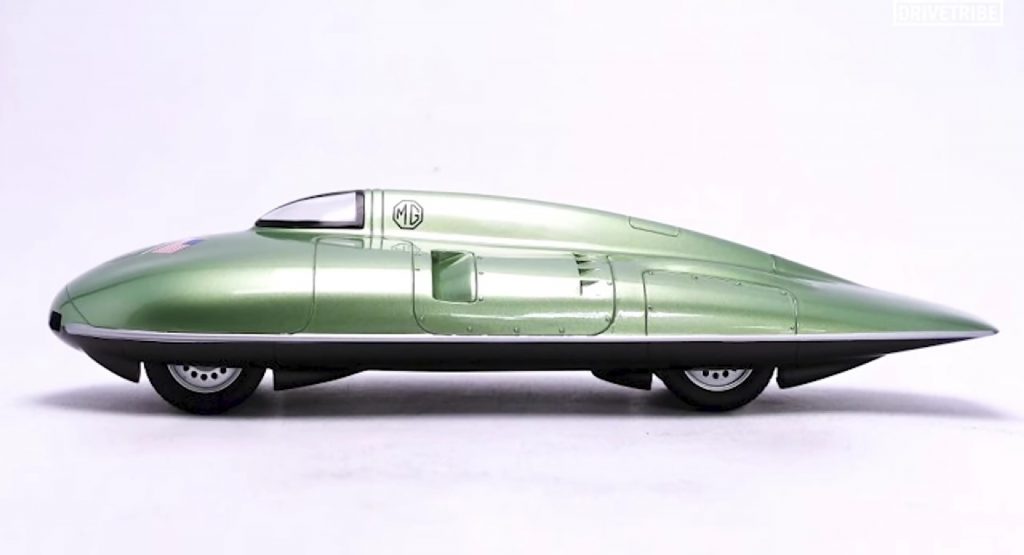It takes the Bugatti Veyron 16 cylinders, 8.0-liters, and 1,001 PS (987 HP/746 kW) to break the 250 mph (402 km/h) barrier but it only took the MG EX181 a fraction of that power to do the same.
As covered by DriveTribe, the high-speed experimental car was designed to go chasing land speed records in the late ’50s. To show off the company’s superior technology, it decided to do so with a modified version of the engine in the MGA.
The 1.5-liter engine made just 68 hp (69 PS/51 kW) when it first nestled in the MGA’s engine bay, but by the time MG added a massive supercharger to it, and pumped 32 pounds of boost into it, it could make 300 hp (304 PS/224 kW).
Read Also: Restored Aston Martin Bulldog Hits 162 MPH In Shakedown Run, Eyes 200 MPH
That’s a pretty impressive upgrade but it pales in comparison to modern supercars and is the amount of power that a hot hatch makes these days. So the remarkable top speed came down to more than just the bump in power.
Indeed, as you may be able to intuit, this was a very slippery car. Thanks to the shape, which was achieved by making the rear track width narrower than the front, some claim that the car had a coefficient of drag of just 0.12. The Mercedes EQS, noted for its aerodynamic efficiency, has a coefficient of just 0.20.
That meant that the car needed just 29 hp (29.4 PS/22 kW) to reach a speed of 100 mph, MG claimed at the time. The driver who earned the car’s 254 mph (409 km/h) record, Phil Hill, claimed that the car was so slippery that it would barely slow when he let off the throttle.
As compared to modern high-speed road cars, the MG EX181 appears to make unbelievably efficient use of its hp. This remarkable machine goes 0.84 mph for every horsepower its engine makes. The Bugatti Veyron, on the other hand, gets just 0.23 mph per horsepower.
It’s all a testament to the incredible things that can be achieved if you’re only focus is going fast.








